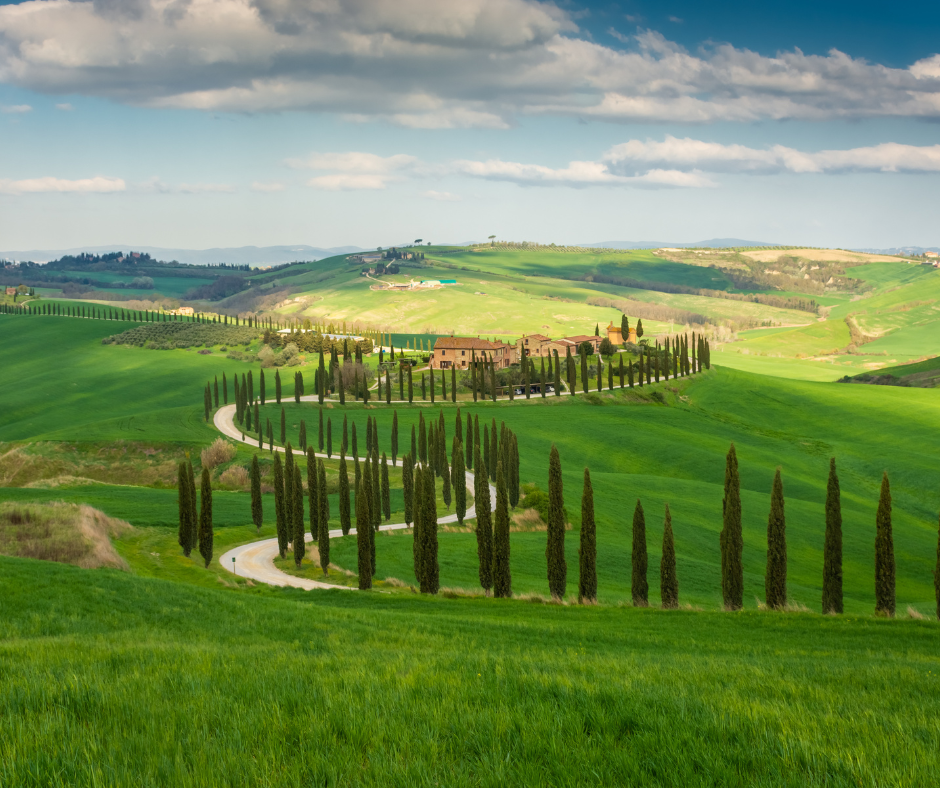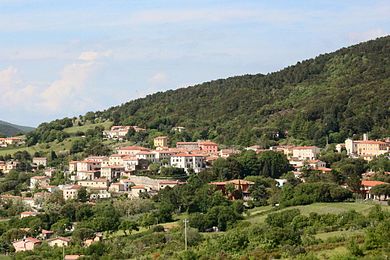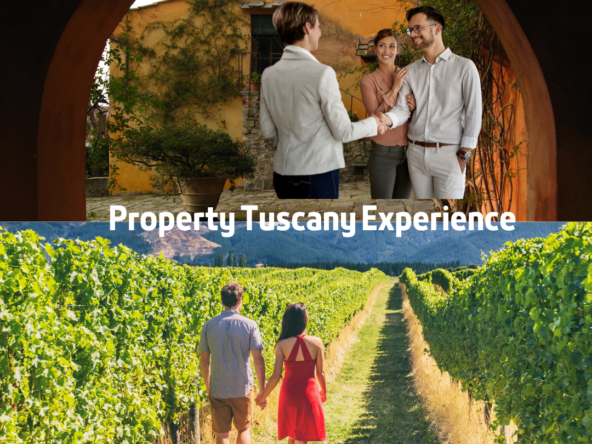The Tuscan landscape is undeniably unique, its hills are paintings and as Indro Montanelli wrote: “In Tuscany it is not clear whether the painters or the farmers are painting”.
Typical of Tuscany is the landscape of the farmhouse in the center of a plot of cultivated land and which, due to its shapes, gives emotions and passions to us who look at it, swaying between the curves of the road.
What today is most often a farmhouse or a semi-detached house, was once a farm or an elementary land unit of a rural society.
Once upon a time the society was structured in sharecropping, that is, an agrarian association contract in which a landowner and a farmer (the sharecropper), divided the products and profits of a farm.
Probably in the movies they showed us and gave us the idea that that type of society was oppressive for the farmers but the reality was not that of the movies, even if there may have been some exploitation but as there is today, in other areas. The sharecropper was also representative of his family, called the farmhouse family; therefore the Podere was the agricultural company, made up of the farmhouse family, rural house and property.
STRUCTURE OF THE FARMHOUSE
The farmhouse was generally built in stone or mixed masonry, on two levels with the roof covered with typical brick tiles (ceramic material).
The house also consisted of annexes as it had to meet all the needs related to the various activities of breeding, cultivation and harvesting of agricultural products.
FARMING YARD: where the cereals were threshed; the Farming Yard usually coincided with the area in front of the main facade of the house which was located to the south, often the only one paved in stone, with one or more trees inside such as the walnut tree to provide shade in the summer.
COURT: located next to the house often as a fenced area, frequent in the medieval era and then fallen into disuse. It was used to keep poultry and bulkier agricultural tools.
In reality the spaces for the chicken coop, the stable for the larger livestock and the pigsty were obtained in various annexes often located to the north.
DOVE COTTAGE: originally it stood isolated near the peasant’s box for the reproduction of pigeons and doves as a food source to eat, as their meat was considered valuable because it was rich in proteins; furthermore, the birds produced the colombina, one of the most sought-after fertilizers.
The dovecote, only later, took on the classic shape of a turret resting on the roof of the house and which we can still admire today in the various farmhouses present in the area.
The farm was self-sufficient in everything and in fact inside it, there was the oven for baking bread, the well (or more rarely the cistern) and one or more huts next to the peasant’s house or in the middle of the fields, with the function of temporary shelter for the worker, or a place to store tools and products; there were often wine presses and olive presses and occasionally also the furnace for drying figs.
.
ORIGINS AND TYPES OF THE FARMHOUSE
In the Middle Ages there were “worker’s houses” or isolated fortifications or watchtowers that were then incorporated into subsequent urban developments through changes in society.
In fact, in the sixteenth century, the first Tuscan rural houses were built as the need arose in the countryside to accommodate the families of the farmer and the peasants.
Towards the eighteenth century, agrarian reforms took place in the Grand Duchy of Tuscany that gave new impetus both to the construction of new farmhouses and farms, and to the renovation of previous ones.
During the twentieth century, with the increase in industrialization, there was a significant depopulation of the countryside and the abandonment of rural houses, leaving many of them in complete decay; we have to wait until the second half of the twentieth century to obtain the beginning of a gradual intervention that led to the rediscovery and valorization of Tuscan rural houses.
Much is owed to foreign citizens, many English and German but today also Danish and Dutch, who, coming to our region and strongly appreciating its beauty, have invested and are investing in its redevelopment; starting from the Florentine and Sienese Chianti, today there are many other areas involved including the Maremma, Lunigiana and Casentino.
Depending on the functions to which they were used in the past, Tuscan rural houses can present a residential type model or according to a business type scheme.
• Residential type, presents a single building with the rustic housed on the ground floor and the upper floors used as a dwelling.
• Business type, consisting of a main building entirely used as a dwelling and one or more detached structures where there were rustic houses and various annexes.
Each area of Tuscany has its own typical variants; the different residential variants however present the building with a rectangular plan, sometimes with an external staircase that led directly to the dwelling on the upper floor.
Arezzo, Florentine and Sienese farmhouses
The Arezzo variant can be identified by the presence of both the portico and the loggias;
The Florentine variant only has the portico;
The Sienese one is often without a portico.
In Val di Chiana and in some areas of the Senese, Arezzo and Florentine Chianti the residential building can culminate with a characteristic dovecote tower.
In the Senese Val d’Orcia, at the foot of Mount Amiata, a landscape of great environmental value is characteristic: from the rows of cypress trees that led to the country residence.
Lucca farmhouses
Around the city of Lucca, the rural houses are distinguished by mixed residential-business characteristics.
The Lucca rural houses are generally arranged around a quadrangular internal courtyard that in the past was used as a farmyard. The buildings (dwellings and rustic buildings) can be arranged on all four sides or on three sides (in this case the last side can remain open or be closed by a wall of modest height).
Pistoia and Pisa farmhouses
Pistoia and Pisa farmhouses, in the flat areas between the cities of Pistoia and Pisa, are widespread residential models.
This type of rural house is generally made up of a series of residential buildings joined together to accommodate several families; the presence of annexes attributable to the business model is rare.
Maremma farmhouses
Maremma farmhouses, unlike the previous ones, are typical rural settlements of a business type, functionally used for intensive agriculture and livestock farming.
The main building was used as a dwelling and the secondary buildings, arranged around the main structure, included granaries, stables and various annexes.
Some rural Maremma houses, due to the Spanish influence, maintain their own stylistic elements that mix with traditional Tuscan ones, especially in the area south of Grosseto since, until the first half of the nineteenth century, the area around Argentario belonged to the Stato dei Presidii.
In the northern and eastern hinterland and in a small part, in the Grosseto Maremma, you can find residential typologies with Sienese influences.
In a few cases, the farmhouse can be reached via dirt roads shaded by rows of trees, with alternating pines and cypresses.
The “Buontalentiana” farmhouse
Between the 18th and 19th centuries, the farmhouse was defined in this way, especially due to the commission and grand-ducal ownership of Buontalenti, a Renaissance architect, characterized by a symmetrical layout centered on a portico and dovecote tower.
It is traced back to Buontalenti models, such as the annexes of the Medici Villa of Artimino, but the farmhouses of the Grand Ducal estate of Poggio a Caiano and the later ones of the reclamation of the Val di Chiana can also be considered examples of this typology.
Buying a Tuscan rural farmhouse as a main residence or for tourism investment in Casentino, Lunigiana, Maremma, Garfagnana.
Book a consultation for your farmhouse in Tuscan





